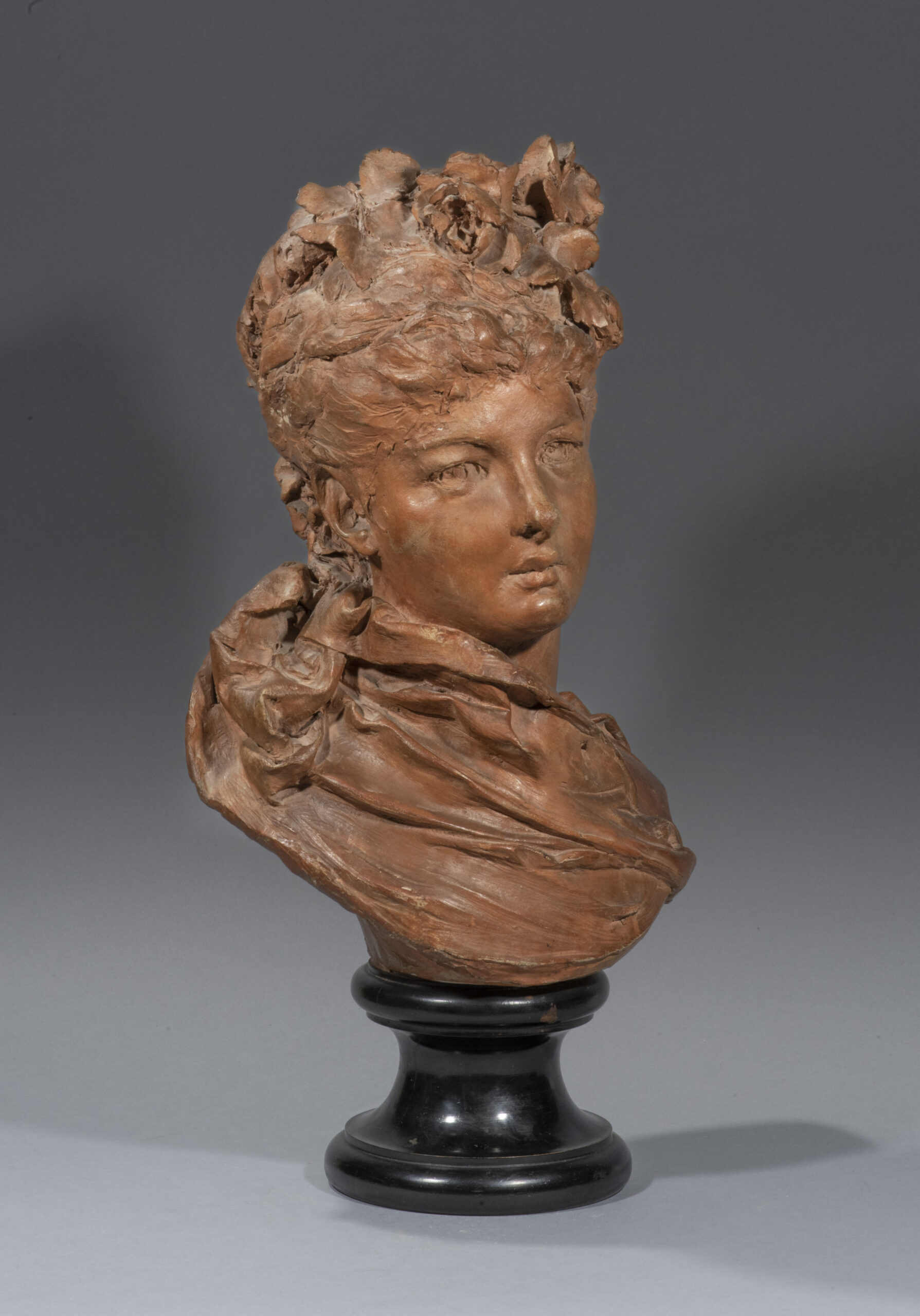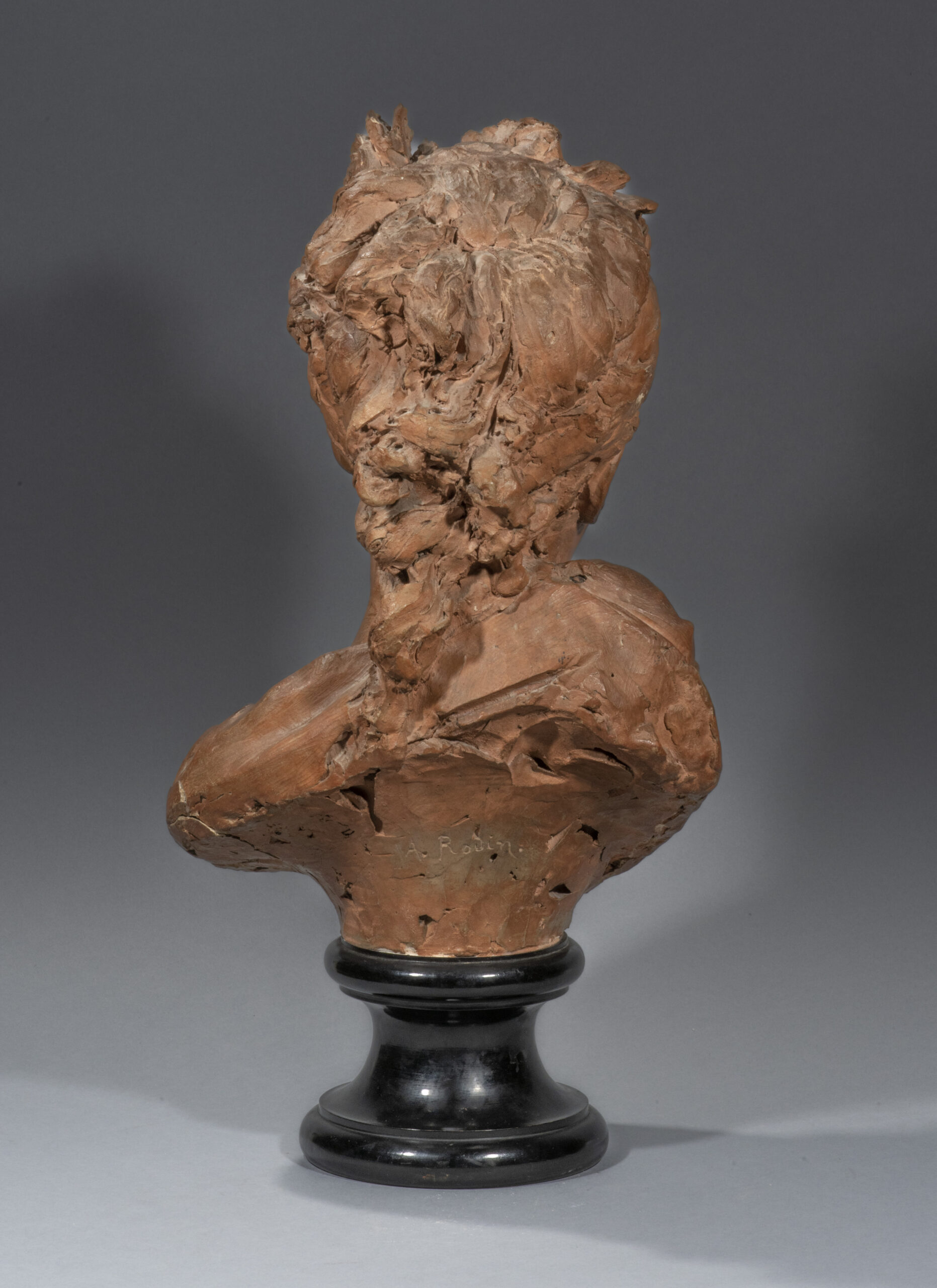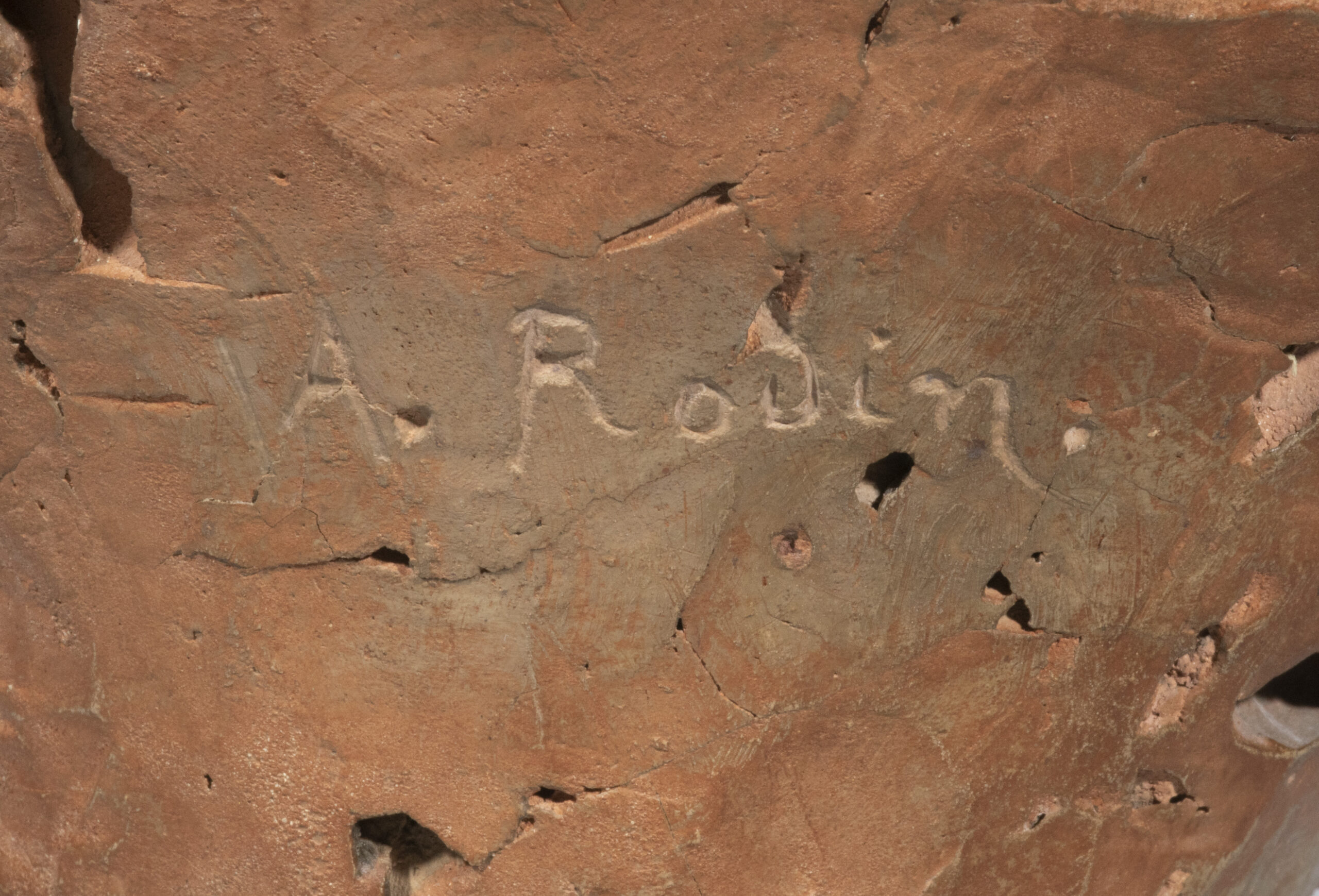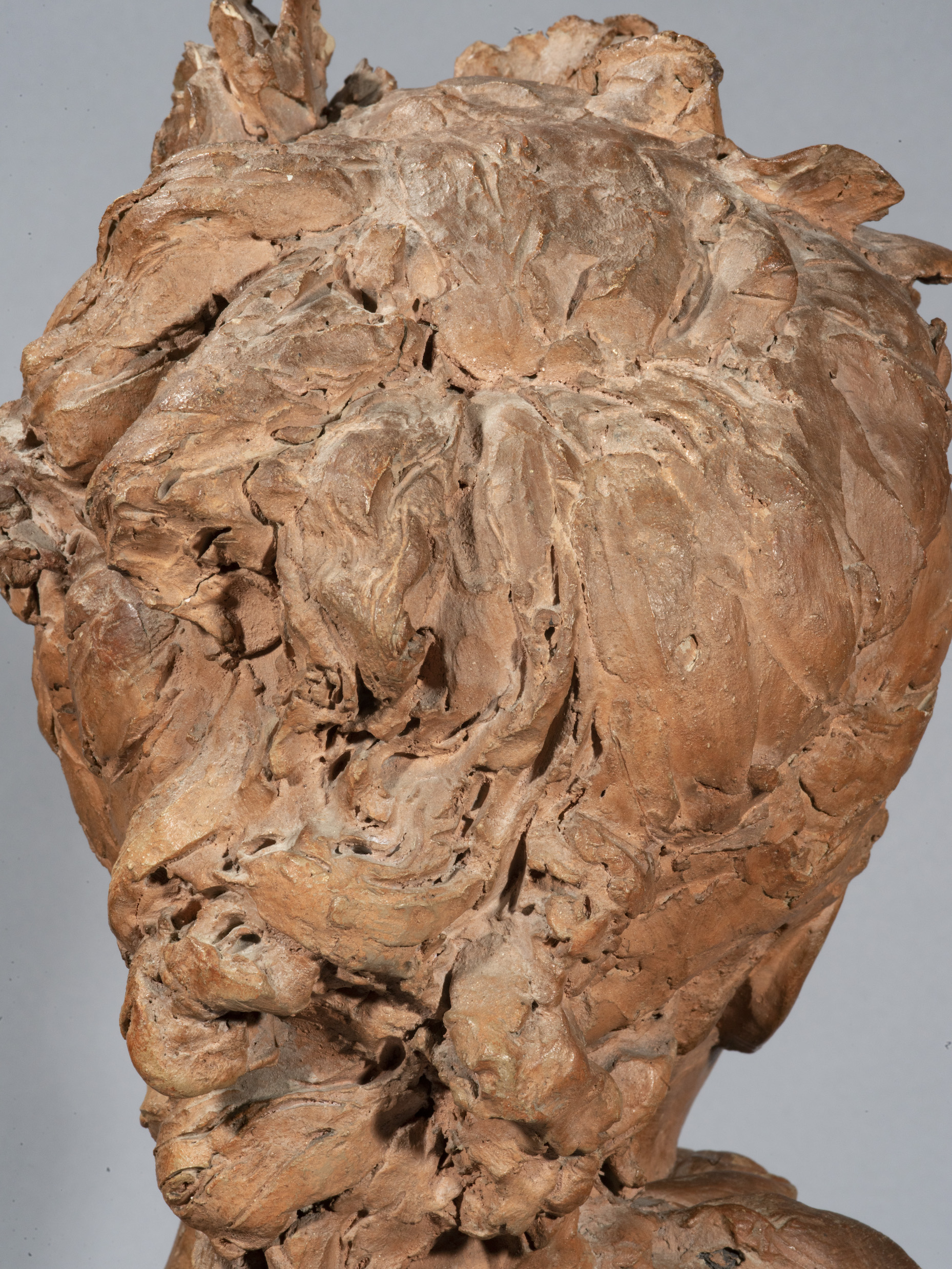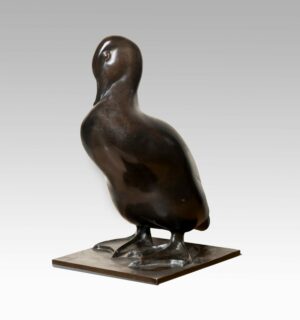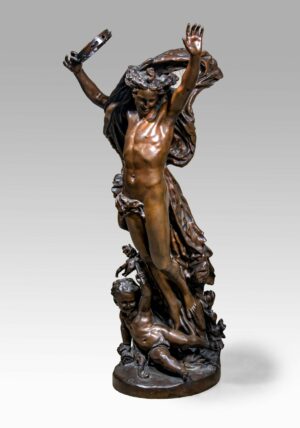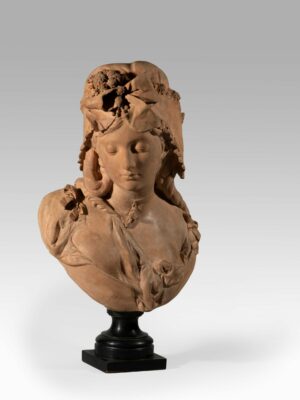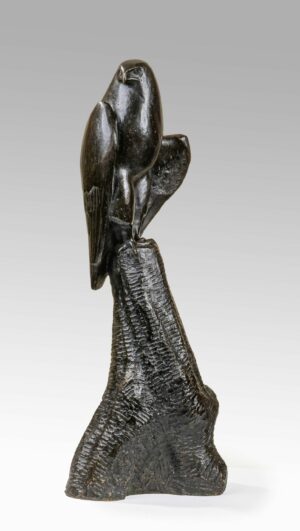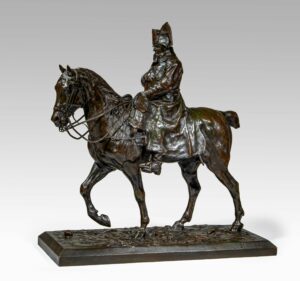Description
Later on, Rodin acknowledged that Carrier-Belleuse (1824-1887) had been: “the master I owe the most … I owe him the power to do what I want with my hands; that is how one must begin.” Indeed, the years of collaboration between the two men, sometimes tumultuous,turned out to be invaluable in Rodin’s career. His fantasy busts carried out during his youth are in line with the conventions established by his master: seductive variations of beautiful creatures crowned with vines, flowers and grapes in the tradition of eighteenth-century designs (by Houdon, in particular). Although the influence of Carrier-Belleuse is always there, we can nonetheless see throughout his portraits that Rodin gradually broke away from decorative grace to let the individuality of the model shine through. Our terracotta therefore has a psychological finesse very different from the stereotyped expressions of pure fantasy portraits. The beautifully modelled face stands out clearly against the stole. The soul seeks itself in the liveliness and the changing expressions of the face, with its deep eyes and pert nose. This can only be achieved through the mastery of “profiles”, of which Rodin often expounded his theory: “when you grasp the profile, you grasp the portrait”. Here again, the sculptor succeeded in capturing the immediate moment, and give vigour to this young girl’s youthful features.
According to the correspondence, kept in the Musée Rodin and family narrative, Charles Feil (1825-1887), a chemist and glass manufacturer, established rue Lebrun, where Rodin rented a studio from the end of 1863 to 1865, received this bust from the sculptor in gratitude for financial support.
The artwork was apparently unsigned at the time and in a letter sent to the artist by Charles Paisseau, Charles Feil’s son-in-law, on April 27, 1900, the latter asked the sculptor to sign the terracotta artwork (Archives MR- file Feil-Paisseau). As it was probably a sketch made for Carrier-Belleuse, whose workshop Rodin had just joined, it seems likely that Rodin did not wish to sign it, in 1865, to avoid any reproach of unauthorised copying. It is also not surprising that Rodin agreed to sign this early work in 1900, as he then no longer feared the wrath of Carrier-Belleuse, whose reputation he had by then far surpassed. To our knowledge, the subject remains unique. Recognised in 1900 by Rodin, by his inscribing his signature onthe terracotta, this bust is therefore a vital testimony to the first steps of this major artist.

